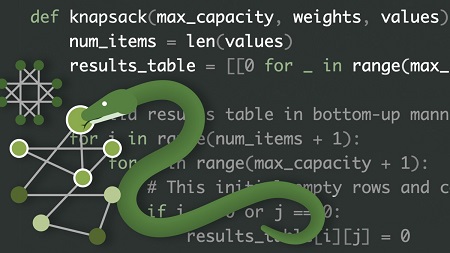English | MP4 | AVC 1280×720 | AAC 48KHz 2ch | 1h 07m | 186 MB
The need for competent problem solvers has never been greater, and Python has become an important programming language. Because of its clarity and expressiveness, Python is an ideal tool to explore algorithmic thinking. In this course, Robin Andrews explains algorithmic thinking and guides you through puzzles, problems, and theories to help you build and challenge your skills. After a warmup problem, Robin shows you how to use the divide and conquer problem solving technique and the Quicksort algorithm, with puzzles to practice each. He dives into the transform and conquer technique that applies preprocessing to the data for a problem before implementing a solution, with additional puzzles for practice. Robin goes over dynamic programming, both top-down and bottom-up, and gives you problems to practice both theory and implementation. Plus, he introduces and explains hash tables and how you can use them to solve problems in Python.
Table of Contents
Introduction
1 Exploration of algorithmic thinking
Warmup
2 The two-sum interview problem
3 The two-sum interview problem solution
4 Number placement puzzle
Divide and Conquer
5 Triominoes puzzle
6 Triominoes puzzle solution
7 Introduction to divide and conquer
8 Quicksort introduction
9 Implementing Quicksort in Python
10 Challenge Implementing Fibonacci function in Python
11 Solution Implementing Fibonacci function in Python
Transform and Conquer
12 Coins on a star puzzle
13 Coins on a star puzzle solution
14 Introduction to transform and conquer
15 Presort for mode finding
16 Number placement puzzle revisited
17 Challenge Implement number puzzle solution in Python
18 Solution Implement number puzzle solution in Python
Dynamic Programming
19 Introduction to dynamic programming
20 Top-down dynamic programming example
21 Bottom-up dynamic programming example
22 The knapsack problem Theory
23 The knapsack problem Python implementation
24 Challenge The knapsack problem
25 Solution The knapsack problem
Hash Tables
26 What are hash tables
27 Python code for hash tables
28 Python dictionaries
29 Two-sum problem revisited
30 Challenge Ransom note
31 Solution Ransom note
Conclusion
32 Next steps
Resolve the captcha to access the links!
